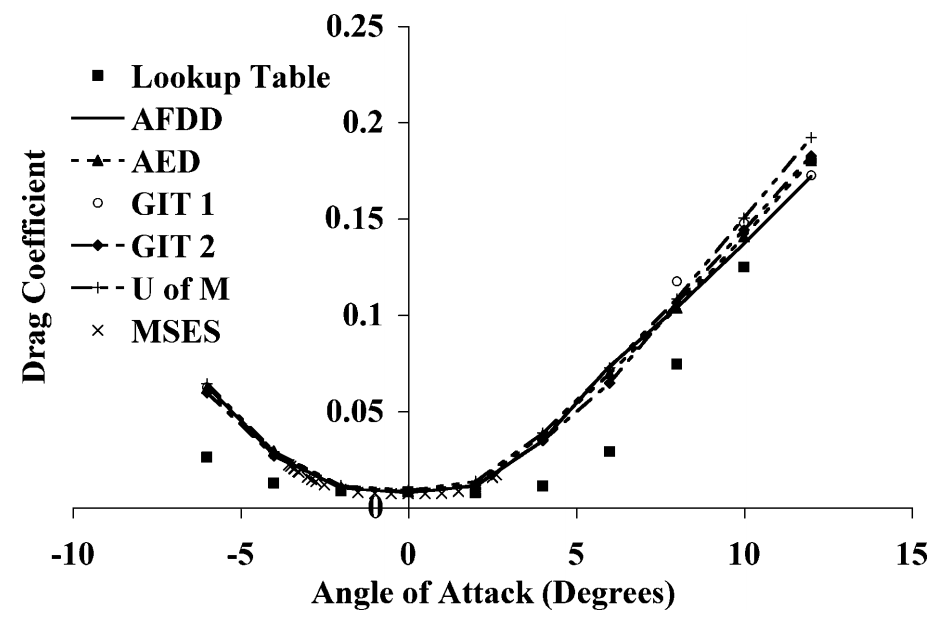 |
||||||||
 |
 |
 |
 |
|||||
 |
||||||||
 |
||||||||
 |
 |
|||||||
 |
||||||||
 |
||||||||
 |
||||||||
 |
||||||||
 |
||||||||
2D Airfoil predictions using zero and one-equation models
In 2006, a joint effort between the Georgia Institute of Technology, the University of Maryland and the US Army aimed at evaluating the potential of CFD for replacing look-up tables in rotorcraft performance codes [1]. Five different CFD codes were implemented independently, all based on algebraic or one-equation models. The details of these codes are summarized in table 1↓.
|
Organization
|
CFD Code
|
Turbulence Model
|
|
AFDD
|
OVERFLOW
|
Spalart Allmaras
|
|
AED
|
FUN2D
|
Spalart Allmaras
|
|
GIT 1
|
CFL3D
|
Baldwin Lomax
|
|
GIT 2
|
Cobalt LLC
|
Spalart Allmaras
|
|
U of M
|
TURNS
|
Spalart Allmaras
|
Table 1
Participants and solution models. AFDD stands for Army Aeroflightdynamics Directorate and AED for Aviation Engineering Directorate. Source: Smith (2006) [1]
All models accurately predict the lift coefficient in the linear regime. However, these simple turbulence models fail at capturing separated boundary layers. This results in poor predictions above the stalling angle. The drag coefficient is also overpredicted. All these observations confirm the statements made in the theory section. Algebraic and one-equation models are good, provided the flow is simple. As long as the boundary layer remains attached and compressibility effects remain relatively weak, the CFD results are reasonable. If a flow departs from these basic conditions, the inherent assumptions in the models are violated, leading to unreliable predictions.
References
[1] M.J. Smith, M. Potsdam, T. Wong, J.D. Baeder, and S. Phanse. Evaluation of computational fluid dynamics to determine two-dimensional airfoil characteristics for rotorcraft applications. Journal of the American Helicopter Society, 51(1):70--79, 2006.

